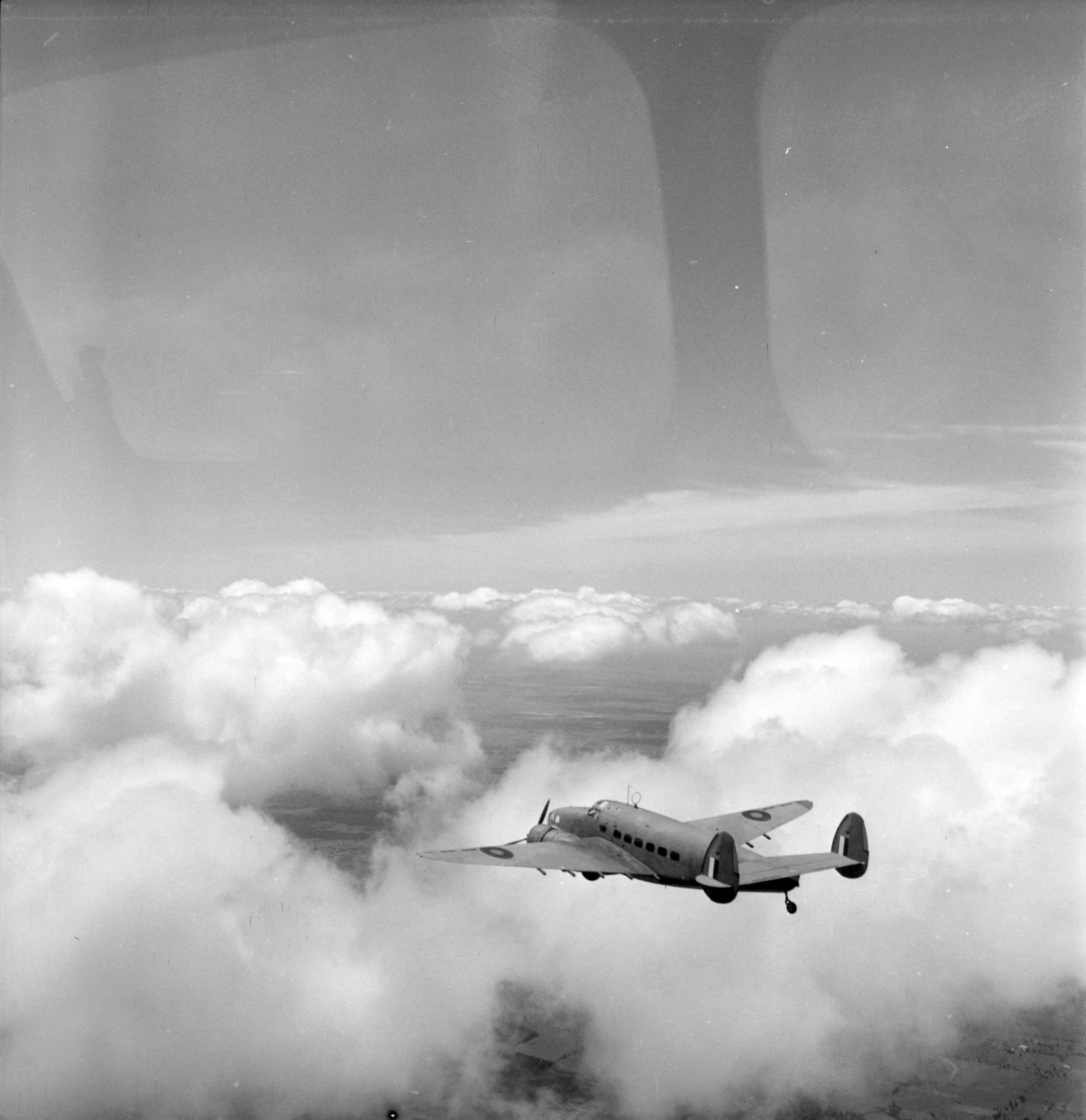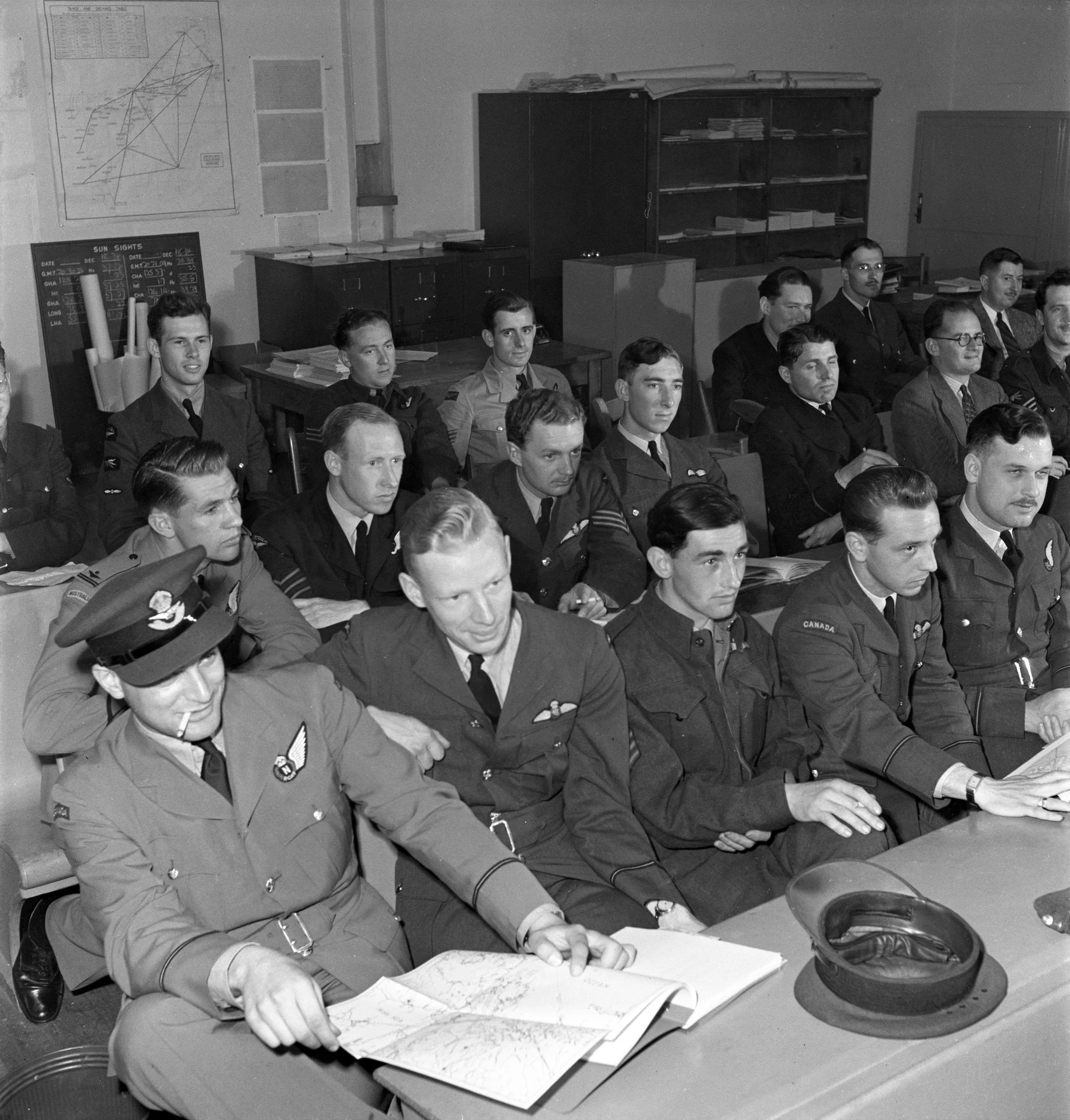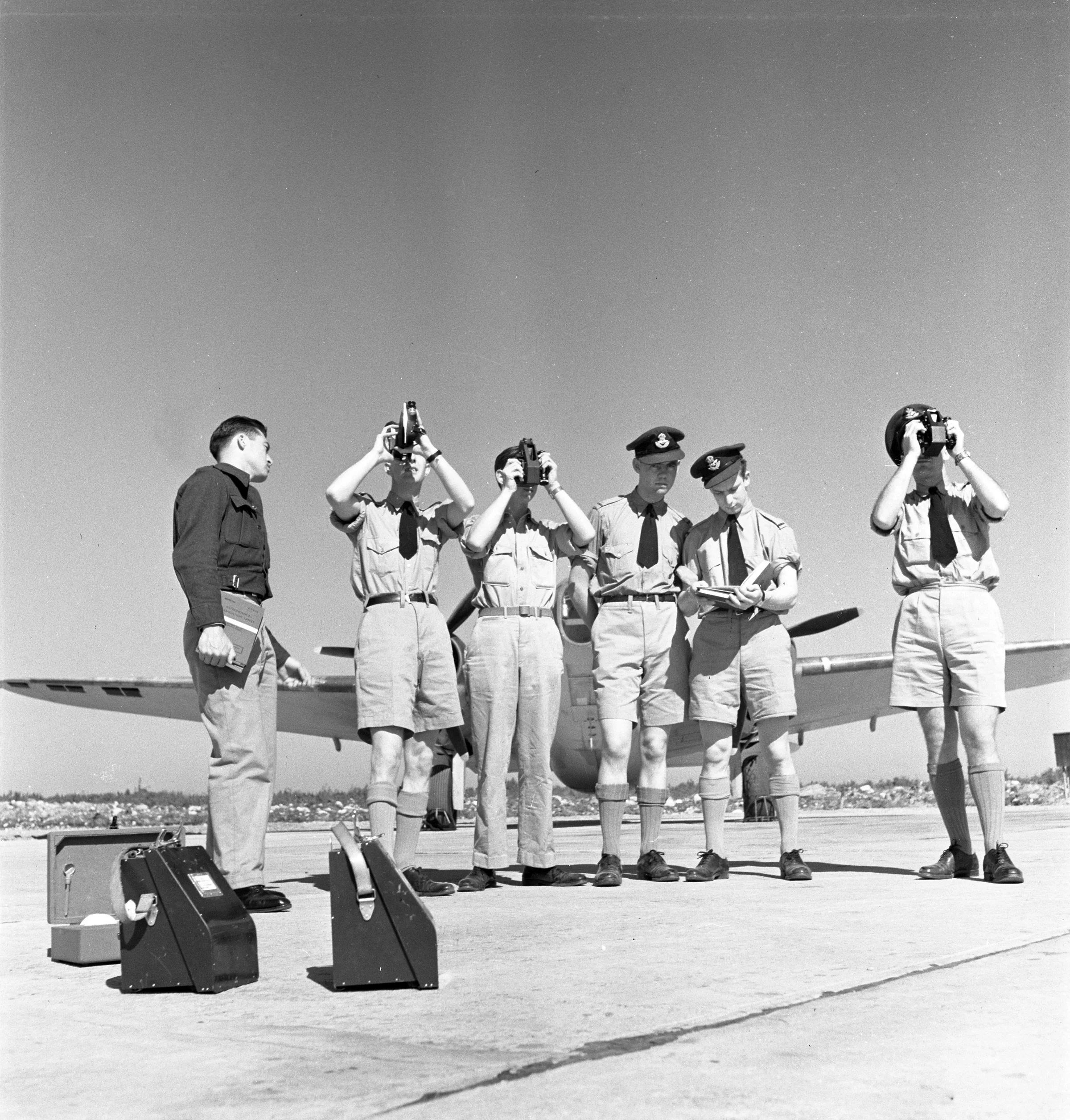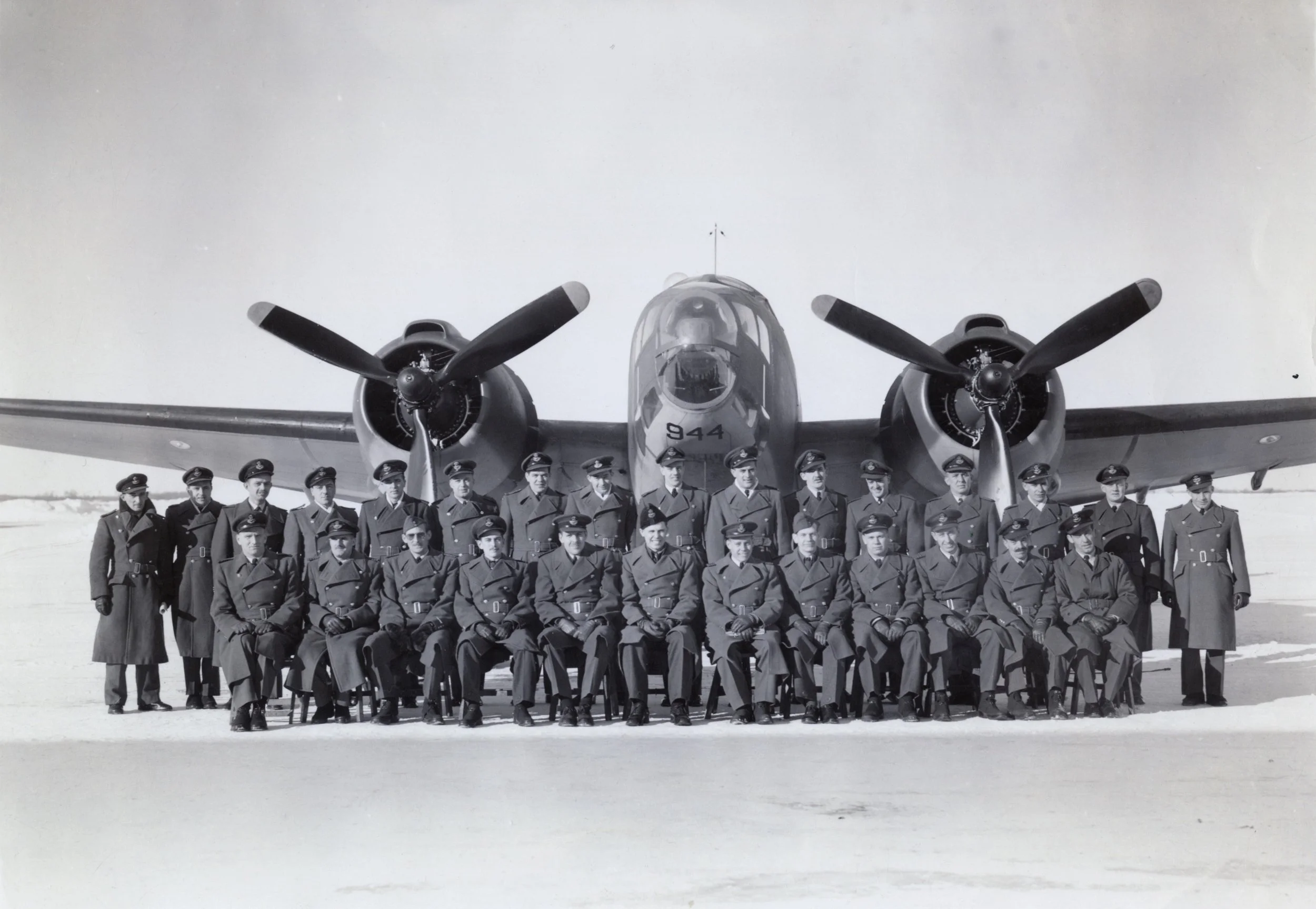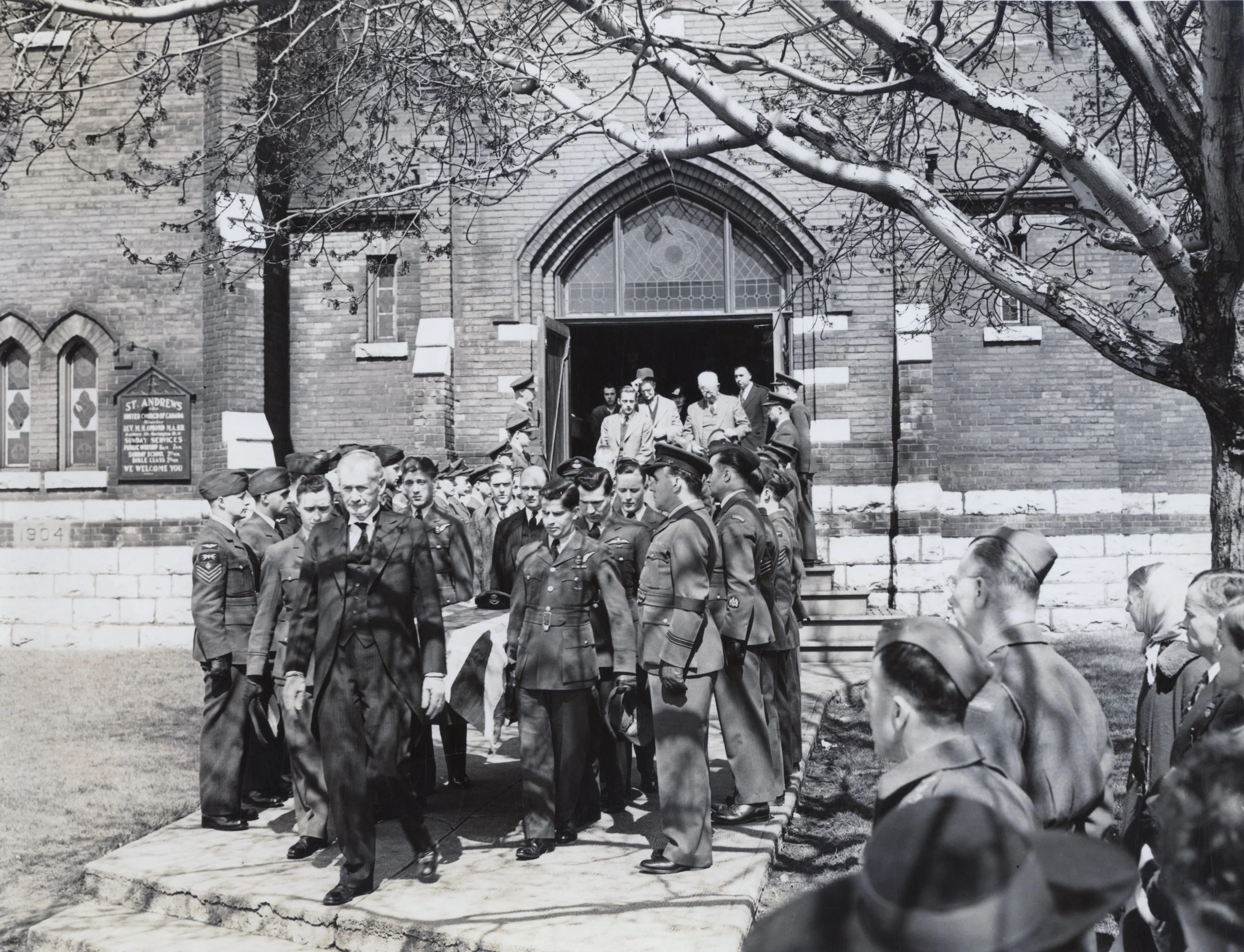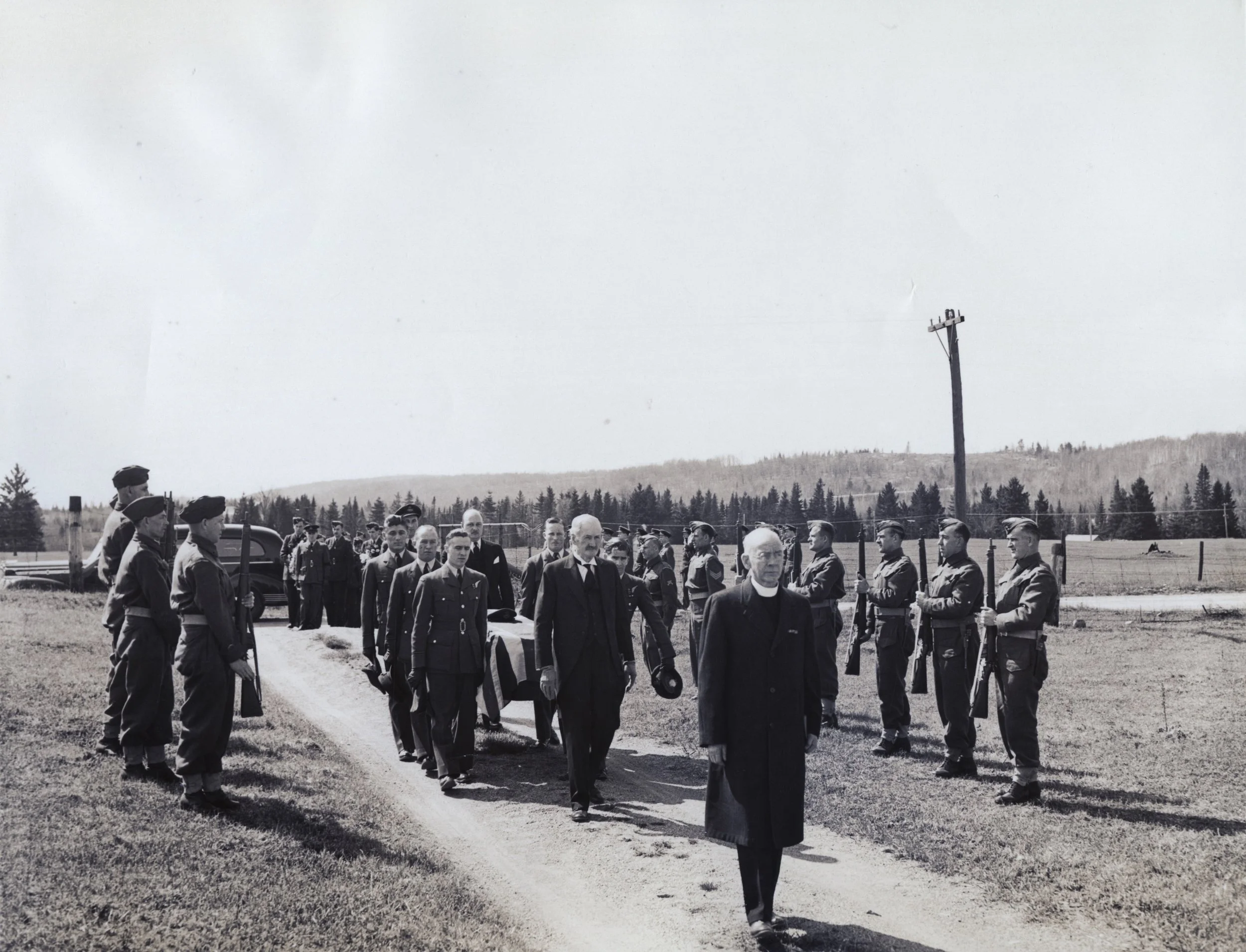North Bay’s Royal Air Force Ferry Training School
THE CHALLENGERS OF THE ATLANTIC
“To Challenge the Atlantic is to challenge the wrath of God”, wrote a British mariner in the 1800s. Early 20th century aviators would have agreed, since almost a third of those who attempted to cross either crashed or vanished.
During the Second World War, the Allied Forces relied upon Canadian and American manufacturing to produce thousands of warplanes to send to Europe. In the battle to control the Atlantic Ocean, Allied ship supply lines suffered devastating attacks from the Nazis. So to send them quickly, the planes needed to be individually flown (ferried) across the Atlantic Ocean.
Ferrying appalled many Allied senior air force commanders and government leaders. The deaths of men and losses of aircraft in ocean flying, they insisted, would be staggering, equal to—if not worse than—battle.
To overcome this, Britain’s Royal Air Force (RAF) established a unique flying school at Montreal, the Trans-Atlantic Training Unit. The school taught airmen how to fly and navigate over the ocean and deal with emergencies that arise along the way. The RAF moved its Trans Atlantic Training Unit school to North Bay in 1942. In 1944, the school was re-named the 313 Ferry Training Unit.
Students Returning from a Night Training Flight
Students and their instructor return from a night training flight. The shortest distance between North America and the UK is over 3,300 kilometers, a 12–16 hour flight at the time. Meaning, to arrive at their destination in daylight crews had to take off at dusk and fly the ocean in the coal black of night. To account for this, the school also taught how to handle the monotonous tedium of droning for endless hours in the darkness which could cause hallucinations or lead flyers to make deadly mistakes.
Library & Archives Canada Image
Practising for Disaster
The troubles that could beset a ferried aircraft over the ocean were legion, ranging from radios exploding to electrical systems bursting into flame to the flying controls suddenly refusing to work for the pilot. Added to this were the storms, ice, fog, and violent winds of the Atlantic. Students graduated from the program able to handle any situation calmly and with speed, regardless of the urgency.
Here, the left engine has been shut down, simulating its failure.
Library & Archives Canada Image
North Bay Airport During the Second World War
The dark buildings and double hangar belonged to the RAF ferry training school. After the war, Britain donated them to North Bay. The hangar is still in use today.
The RAF chose North Bay because the vast, surrounding Northern Ontario landscape perfectly represented the Atlantic Ocean. Scads of airfields also dotted the region, serving as places to land if a mechanical problem struck a training plane.
North Bay Museum Collection
Ferry School Pilot Training
An instructor (right) tutors a student pilot on how to use his instrument panel during ocean flying. Pilots had to know their airplane’s electrical and mechanical systems so well they could draw them on paper from memory. If a system had a problem or failed outright during a crossing, there was no one the crew could call for help, and no place to land.
The cockpit’s escape hatch has been removed for the photo.
Library & Archives Canada Image
Ferry School Students from Around the World
Over 1,000 Allied airmen trained at North Bay. They came from 23 countries across 5 continents. North Bay’s streets, shops and restaurants rang with accents from as far away as Indonesia, Greece and Malaysia. A dark-uniformed Cuban pilot stands at right.
Library & Archives Canada Image
RAFFC School Classroom
Note the different regiments of the RCAF in the first row and Australian airmen in the second.
Ferry School Navigation Training
North Bay students were taught how to navigate over the ocean. Getting lost meant flying into enemy territory or running out of gas and crashing into the sea. Without GPS or computers, Ferry crews had to find their way over the ocean using the same 200-year-old method used by mariners in the days of wooden sailing ships. As seen here, a flyer held a sextant to his eye and aimed at the sun, moon or a star. By plotting their locations in the sky, he could pinpoint his plane’s position over the ocean.
Library & Archives Canada Image
Did You Know…
Before the Second World War, the survival rate for the 16 hour flight over the Atlantic Ocean was around 60%. By the end of the War, this had increased to 96% thanks to the training provided by instructors at the ferry training school in North Bay.
Flying Officer Laurence Davies and Flight Sergeant William Gribbin were the first to die from an aviation accident in the North Bay area. It was also the first air accident of any kind in the school’s 3 years at North Bay, out of the hundreds of flights that had plied the region’s skies.
Photo of Mitchell Bomber
Courtesy of the Canadian Aviation and Space Museum
On April 28, 1945 a twin-engine B-25 Mitchell bomber crashed 1 ½ kilometers east of the airport, killing the pilot, 22 year old Flying Officer Laurence Davies, and the bomber’s radio operator, 20 year old Flight Sergeant William Gribbin, both from Britain.
It wasn’t a training flight, but an “air test”—a euphemism for going flying for the fun of f lying. Two airplane mechanics, Canadians from North Bay, went along on the jaunt.
The day was clear and sunny. Twenty minutes after taking off at 10:45 that morning, Davies abruptly called the airfield requesting an emergency landing. Onlookers saw the bomber skim over the field barely 100 feet in the air, its tail down, nose high, like a struggling goose. What was wrong, Davies never said, apparently too busy fighting to keep the airplane aloft.
As it exited the airfield, bystanders watched the bomber enter into a left-hand turn and drop towards the earth. Its left wing struck the trees which sent the bomber cartwheeling before smashing into swampy bushland.
Davies and Gribbin were thrown from the crash and killed instantly. The two Canadian mechanics luckily remained inside the bomber and survived the crash with severe injuries.
Laurence Davies (back row, 3rd from the left) with 313 Ferry Training Unit Personnel in front of a Hudson bomber at the North Bay Airfield.
Remember When…
“I came to North Bay in 2024 to pay homage to my uncle, who was an instructor at the flight school and died in 1945 in a crash near the North Bay airport just weeks before the end of the Second World War.
“I went to his grave at Terrace Lawn Cemetery and sat there and told him all about my family and I, which sounds weird, but it was really peaceful.
“My late father always wanted to visit the city where his brother is buried. During my trip, I met with 22 Wing Heritage Officer Doug Newman and military historian Bob Armstrong to learn more about my uncles’ time in North Bay.
“There’s so much history there and I don’t want to lose it. If anything, I’d like to keep it here, which is why I donated my Uncle’s letters and photographs to the North Bay Museum.
“I believe it’s more important to keep it here because this is where my uncle spent much of the last (very happy) year of his life.”
Sally Davies
Niece of Laurence Davies, Kent, England
Photographs of Laurence Davies’ Funeral
These photographs capture the procession from St. Andrews Church after the funeral service for Flying Officer L.W. Laurence Davies RAF. He was killed on April 28th, 1945 when the bomber he was piloting suffered a mechanical malfunction and crashed in woods east of the North Bay Airport. He was buried at Terrace Lawn Cemetery on April 30, 1945.
Photographs Donated by Sally Davies


